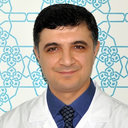Delirium in patients with acute ischemic stroke admitted to the non-intensive stroke unit: Incidence and association between clinical features and inflammatory markers.
Cuvinte cheie
Abstract
BACKGROUND
Stroke patients with development of delirium have unfavorable outcomes, higher mortality, longer hospitalizations, and a greater degree of dependence after discharge. Studies suggest that delirium is associated with abnormal immunological responses and a resultant increase in inflammatory markers.
OBJECTIVE
Our aim was to determine whether there is an entity relationship between delirium, inflammation and acute ischemic stroke (AIS).
METHODS
Sixty AIS patients admitted to the hospital were consecutively recruited. Delirium was diagnosed with the clinical assessment according to the Statistical Manual of Mental Disorders, Fifth Edition (DSM-V) criteria. Enzyme-linked immunosorbent assay (ELISA) was used to measure serum levels of Interleukin-1 beta (IL-1 beta), Interleukin 18 (IL-18), Tumor Necrosis Factor-alpha (TNF-alpha), Brain-Derived Neurotrophic Factor (BDNF), and Neuron Specific Enolase (NSE) at admission.
RESULTS
Eleven (18.3%) of 60 patients were diagnosed with delirium, and the majority (n=8, 72.7%) was the hypoactive type. Delirious and non-delirious patients had similar demographic and clinical features. Delirious patients had significantly higher lengths of hospital stay, National Institutes of Health Stroke Scale (NIHSS) at admission and discharge compared to non-delirious patients. In addition, there was no significant statistical difference between delirious and non-delirious patients with AIS in respect of levels of TNF-alpha, IL-1 beta, IL-18, BDNF and NSE. This study suggests that delirium is not scarce in patients with AIS admitted to the non-intensive stroke unit, and that delirium developing after AIS seems not to be associated with serum TNF-alpha, IL-1 beta, IL-18, BDNF and NSE but is associated with length of hospital stay and stroke severity.




